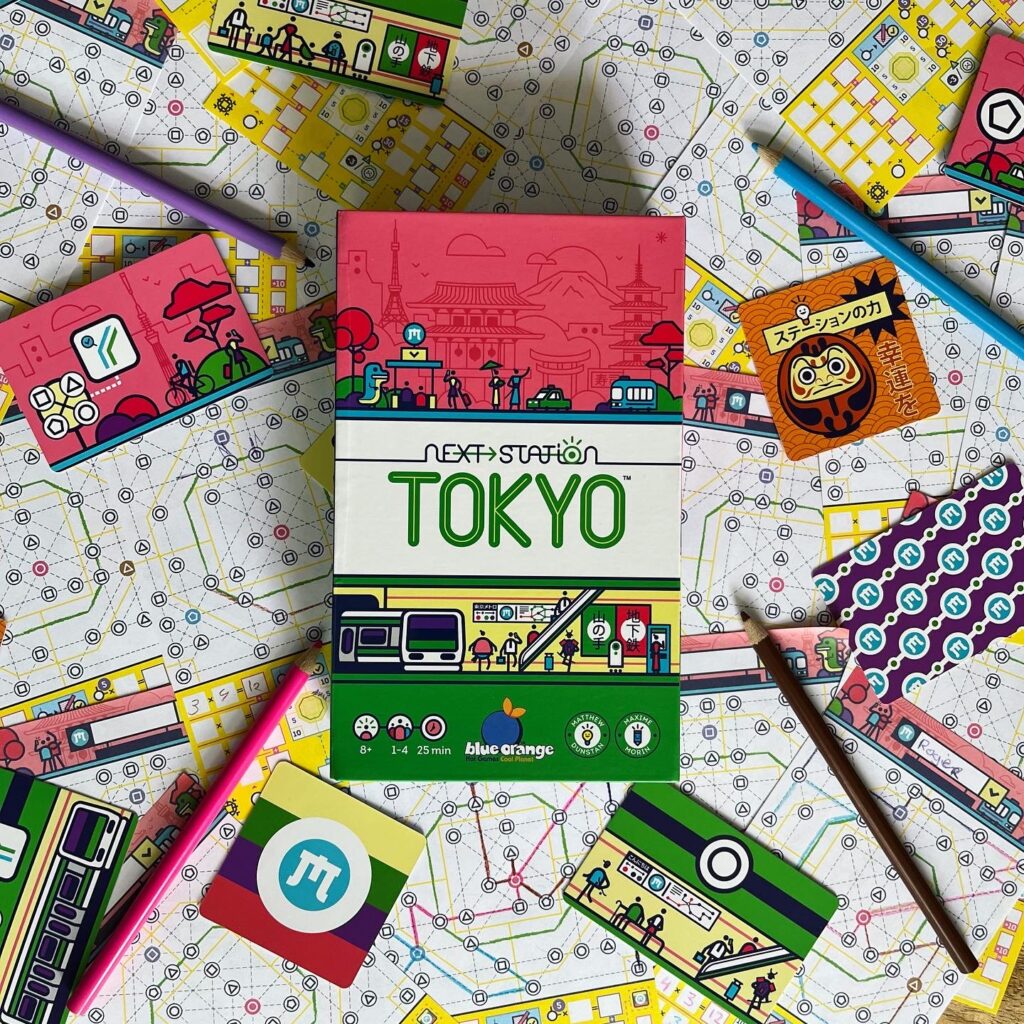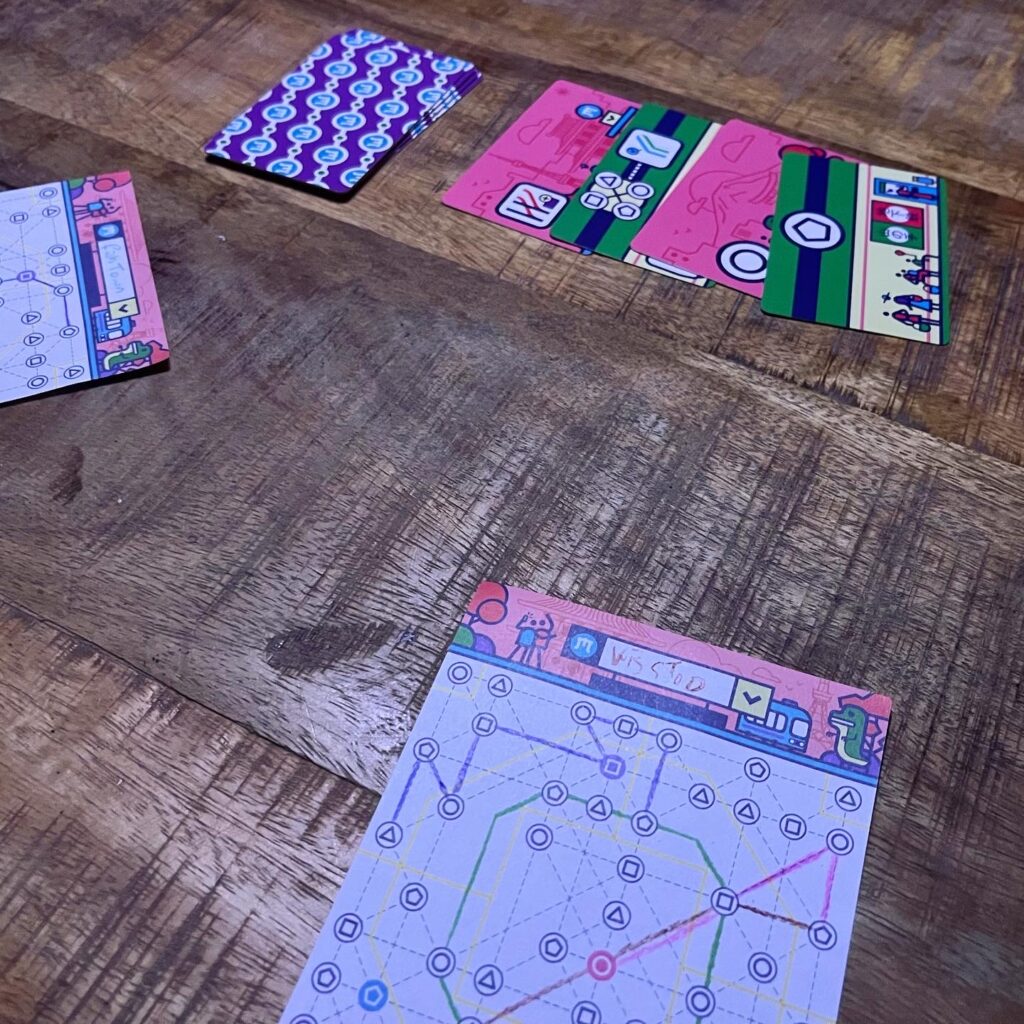A fast and efficient metro system, trams, buses, big trains, small trains and extremely fast trains like the Shinkansen? Japan offers many different forms of public transport, but what will be your next destination in Next Station: Tokyo?
When you think of cities with large public transport and metro networks, you might think of Tokyo but probably also of London. Not entirely inappropriately Next Station: Tokyo is part of a (now) series of games that began with Next Station: London. The Next Station games are roll-and-write games published by French publisher Blue Orange Games. In Next Station, players will draw metro lines, visit as many neighbourhoods and connect as many stations as possible. Players get (minus) points each round and at the end of the game. The players with the most points win!

London and Tokyo (at least these games) are pretty similar, but there are some differences. Next Station Tokyo is London’s more complex big sister and in this game there are more opportunities to score points, there is an extra underground line already drawn on the score pad before the game starts, there are extra bonus cards/opportunities, the game has a more complex layout of districts and other modules. Don’t know Next Station at all yet? In Next Station, four different rounds are played. Each round, a player is given a different colour pencil each time to draw lines on their sheet.
At the beginning of the game, each player is given a sheet of paper. On that sheet there are several districts (indicated by yellow dividing lines) and several stations (circles with different symbols). Players shuffle a pile of cards with the same symbols as the stations, but also jokers and special symbols indicating specific bonuses. Each round, different cards are turned face-up each time until five cards in a specific colour have been shuffled through the pile. Because these cards are shuffled randomly each round, you never know exactly when a round is over. The cards that are turned face-up show specific symbols and thus stations. Players may draw a straight line on their card from one end of their current underground line (the colour pencil they are currently holding) to the corresponding station. Players start each round at the starting station in the colour of the pencil they are playing with that round. Lines may not cross each other, watch your step with drawing so you don’t block your next underground lines too much.
Players score points by multiplying the number of districts they have passed with a specific metro line by the amount of stations in the district where they have connected most stations. Once you have passed a station, however, it is not a passed station, because by connecting several metro lines to the same station, you create a so-called interchange station. These transfer stations allow you to earn points depending on the amount of different colours. In Tokyo, you also have to help tourists on their way to suburbs. Transfer stations in these suburbs earn so-called tourist stamps and bonus points. In Next Station Tokyo, there is also a fifth colour metro line that is already on your map. If you don’t manage to connect other metro lines to stations where this central metro line rumbles past, you score minus points.

Next Station remains a highly entertaining and Next Station: London was (and is) a very unique roll-and-write and Tokyo is essentially a slight variation on the same game. As we described earlier for London, because you draw four different metro lines in the four rounds, you can plan somewhat ahead, but because the round duration is uncertain, your plans can fail (or at least derail) considerably. So players must take some risk in this game series to achieve the best result, but also keep enough opening with the uncertain. The timetable In Next Staton remains fickle due to the cards, but this keeps the game enormously varied. Furthermore, there are multiple opportunities to gain points, but mostly opportunities to optimise your points. Players mainly gain points by visiting different districts and stations. So putting your metro lines on the map is always a huge puzzle and you should be able to adjust your strategy/plans easily. Some flexibility is required if you miss your train. Tokyo adds some much-needed variety and complexity, so your next station is no final destination either!



